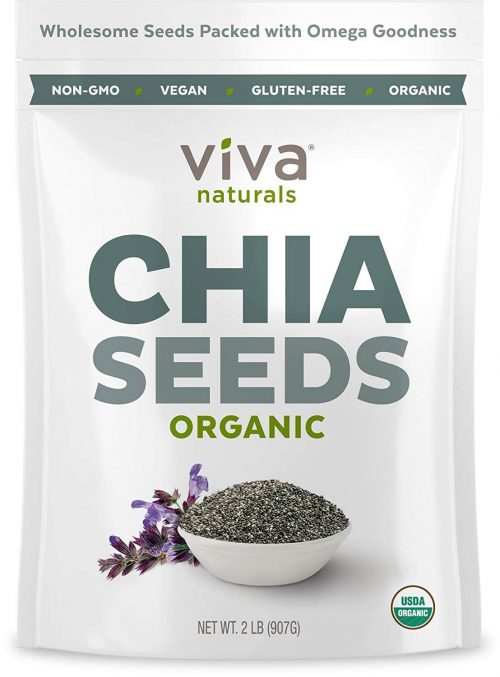
You can order vegetarian meals from many delivery services if your schedule doesn't allow for it. A few of them include Hungryroot, Daily Harvest, Veestro, and Sprinly. You can choose from a variety of different meals and customize them to suit your needs.
Hungryroot
Hungryroot might be a good option for vegetarian meal delivery services. You can customize your delivery menu and there are many subscription options. Each subscription comes with three to four different recipes and is designed to be simple to prepare, with a minimal amount of ingredients. You can choose the day of delivery to tailor your subscription.
Hungryroot subscriptions cost vary depending on the size and content of your box. Subscribers with larger boxes cost around $60, while subscriptions with smaller boxes cost $59 or less. Each meal comes with three to four meals and two snacks. Hungryroot sends your box either for one week, or for one month. You have the option to cancel at any time.
Sprinly
Sprinly offers delivery of vegetarian and vegan meals. The weekly meals are prepared organically and are curated by nutritionists to ensure that they provide the highest nutritional value. Every meal is labeled and includes information about the nutrition it contains. Customers can also choose whether to have their meals warm or cold.

Each menu has a brief description, ingredients list, nutritional facts, as well as allergen icons. Sprinly ships only to certain areas of the United States. However, they are currently expanding their reach to other countries.
Veestro
Veestro doesn't offer vegetarian meal delivery. Veestro's founders are passionate about food and believe you are what your eat. This is why they are committed to providing only the finest ingredients in their meals. They are also dedicated to their customers, and will do everything to make sure they are happy.
Veestro foods are only made from natural ingredients. They do not contain refined sugars and processed carbohydrates. You can also choose not to include certain nutrients. The average meal contains between 260 to 800 calories. Veestro meals ship in insulated medium-sized cardboard boxes. They are preserved in dry ice, and their nutritional content is provided on the packaging. These can then be heated in the microwave or on your stovetop. The exact cooking time will depend upon the particular meal.
Daily Harvest
Daily Harvest delivers plant-based meals and is known for its vegetarian and vegan dishes. The original idea behind Daily Harvest was to provide smoothie delivery services. Since then, flatbreads, salads and soups have been added. For you to feel satisfied, nutritionists and chefs have created the recipes. The labels clearly list all ingredients so you can easily identify what's in each meal.
Daily Harvest's price is about the same as other meal delivery services. Even though portions are not very large, Daily Harvest's meals can easily be shared by one person. For customers who order larger quantities, the company offers discounts. Daily Harvest is an excellent choice for vegans and busy professionals.

Sakara Life
Sakara Life could be the right choice for you if your interest is in a service that delivers vegetarian meals. The company provides delicious meals that you can prepare at home. Each meal is created based on the science behind the whole food plant-based diet. Ingredients include organic wholegrains, protein from plants-based sources, as well as superfoods that are high in nutrients. They are also organic, gluten free, and free from GMOs. Sakara Life also offers cleansing options and some dietary supplements. Sakara Life is clearly a women-oriented company with a look similar to Goop and Elle.
Customers can modify their account and meal program anytime online or by calling customer care. They can also request a swap of meals if they don't enjoy a particular dish. Sakara Life should be notified in advance if there are any changes to your meal plans.
FAQ
What are 10 healthy behaviors?
-
Breakfast is a must every day.
-
Don't skip meals.
-
Maintain a balanced diet.
-
Drink lots of water.
-
Take care of your body.
-
Get enough sleep.
-
Stay away from junk food.
-
Do some form of exercise daily.
-
Have fun
-
Make new friends
How does an antibiotic work?
Antibiotics are drugs which destroy harmful bacteria. Antibiotics are used for treating bacterial infections. There are many options for antibiotics. Some can be taken orally while others can be injected. Others are topically applied.
People who have been exposed are often given antibiotics. An oral antibiotic might be prescribed to someone who has been exposed to chicken pox. This will prevent the spread of shingles. An injection of penicillin may be necessary to prevent pneumonia if someone has strep.
Doctors should prescribe antibiotics to children. Children are more likely to experience side effects than adults from antibiotics.
Diarrhea, the most common side-effect of antibiotics, is probably diarrhea. Other possible side effects include stomach cramps, nausea, vomiting, allergic reactions, headaches, dizziness, and rashes. These symptoms usually go away after treatment ends.
Why do we need to have a healthy lifestyle?
Healthy lifestyles lead to happier and longer lives. Regular exercise, healthy eating habits, healthy sleep habits and stress management can all help prevent strokes, heart disease, diabetes, and cancer.
A healthy lifestyle will improve our mental well-being and help us deal better with everyday stresses. A healthy lifestyle can also help you feel and look younger.
Take herbs and other supplements to improve your immunity
To boost immunity function, herbs and natural remedies are available. Ginger, garlic, ginger, oregano oils, echinacea and ginkgo biloba are some of the most common.
These herbal remedies should not be used in place of conventional medical treatment. They could cause side effects like nausea, dizziness or stomach cramps, dizziness as well as allergic reactions.
Which are the top 10 foods you should eat?
The following are the 10 best foods to consume:
-
Avocados
-
Berries
-
Broccoli
-
Cauliflower
-
Eggs
-
Fish
-
Grains
-
Nuts
-
Oats
-
Salmon
Statistics
- According to the Physical Activity Guidelines for Americans, we should strive for at least 150 minutes of moderate intensity activity each week (54Trusted Source Smoking, harmful use of drugs, and alcohol abuse can all seriously negatively affect your health. (healthline.com)
- WHO recommends reducing saturated fats to less than 10% of total energy intake; reducing trans-fats to less than 1% of total energy intake; and replacing both saturated fats and trans-fats to unsaturated fats. (who.int)
- The Dietary Guidelines for Americans recommend keeping added sugar intake below 10% of your daily calorie intake, while the World Health Organization recommends slashing added sugars to 5% or less of your daily calories for optimal health (59Trusted (healthline.com)
- This article received 11 testimonials and 86% of readers who voted found it helpful, earning it our reader-approved status. (wikihow.com)
External Links
How To
What does the "vitamin") mean?
Vitamins are organic compounds naturally found in food. Vitamins are essential for our bodies to absorb nutrients from the foods we eat. Vitamins cannot be made by the body; they must be taken from food.
There are two types vitamins: water soluble or fat soluble. Water-soluble vitamins dissolve easily when they are dissolved in water. These include vitamin C (thiamine), Vitamin B1 (riboflavin), Vitamin B2 (riboflavin), Vitamin B3 (niacin), Vitamin B6 (pyridoxine), Vitamin C, B1 (thiamine), Vitamin B2 (riboflavin), Vitamin B3 (niacin), and Vitamin B6 (pyridoxine). The liver and fatty tissue are the main storage places for fat-soluble vitamins. Examples include vitamin D, E, K, A, and beta carotene.
Vitamins are classified according their biological activity. There are eight major vitamin groups:
-
A - essential for normal growth and maintenance of health.
-
C - vital for nerve function and energy generation
-
D – Essential for healthy teeth, bones and joints
-
E - required for good vision & reproduction.
-
K - Required for healthy nerves and muscles.
-
P - Vital for strong bones and teeth.
-
Q – aids digestion and absorption.
-
R - Required for red blood cell production
The recommended daily allowance for vitamins (RDA) varies according to age, gender, or physical condition. The U.S. Food and Drug Administration (FDA) sets the RDA values.
For adults over 19 years, the RDA is 400 mg per day for vitamin A. Pregnant women require 600 micrograms daily to support fetal development. Children ages 1-8 require 900 micrograms per day. Infants below one year of age need 700 micrograms daily. But, between 9 months to 12 months of age, the amount drops to 500micrograms per days.
Children aged between 1-18 years old who are obese require 800 micrograms per Day, while overweight children need 1000 micrograms every day. Children underweight or obese will require 1200 micrograms a day to meet their nutritional requirements.
Children between 4-8 years of age who have been diagnosed by anemia must consume 2200 micrograms daily of vitamin C.
2000 micrograms are required daily for good health in adults over 50. Due to their increased nutrient needs, pregnant and breastfeeding women need 3000 micrograms daily.
1500 micrograms is the recommended daily intake for adults aged 70+, as they lose 10% of their muscle every ten years.
Women who have been pregnant or are lactating require more than the RDA. Pregnant and breastfeeding women require 4000 micrograms each day during pregnancy and 2500 Micrograms each day after birth. Breastfeeding mothers need 5000 micrograms per day when breast milk is being produced.